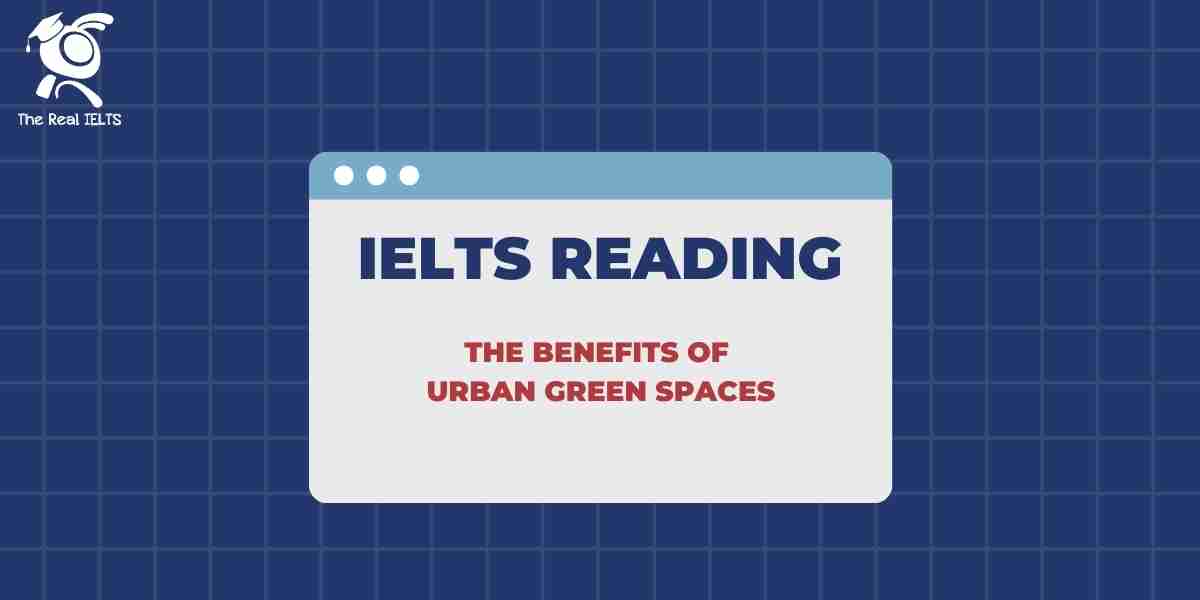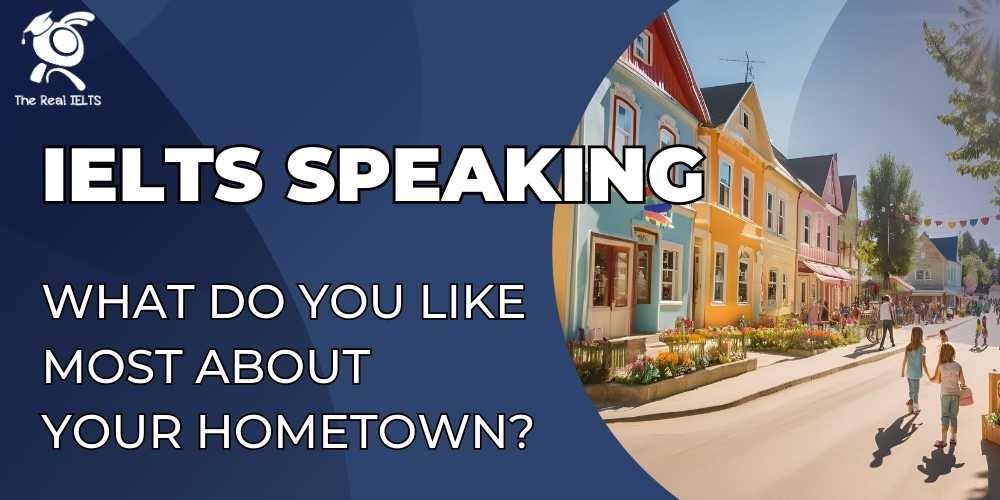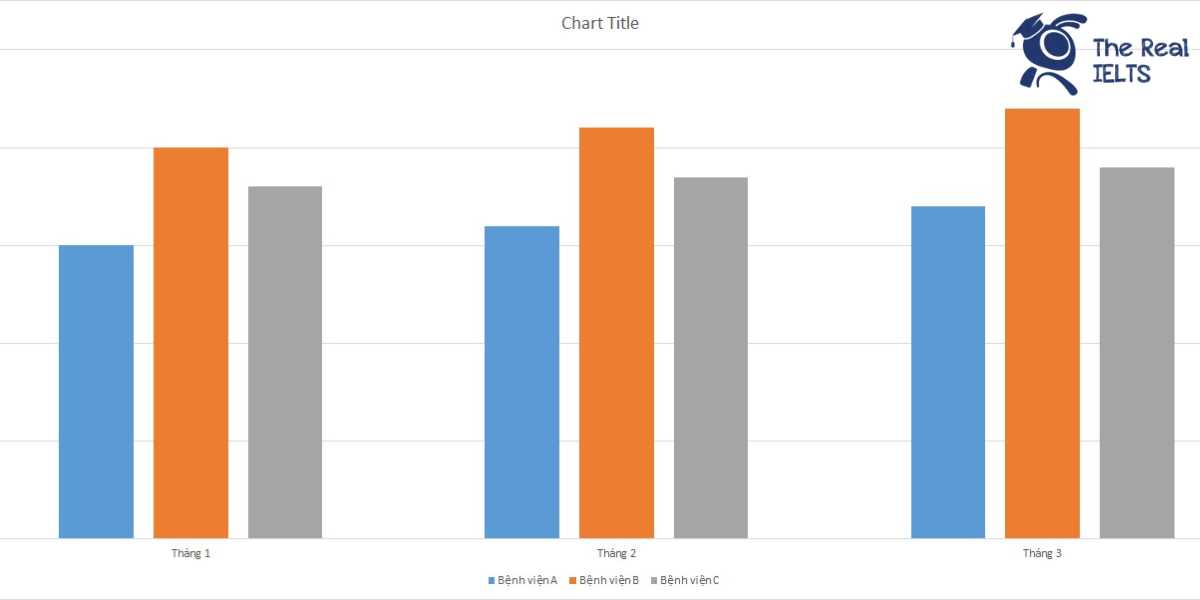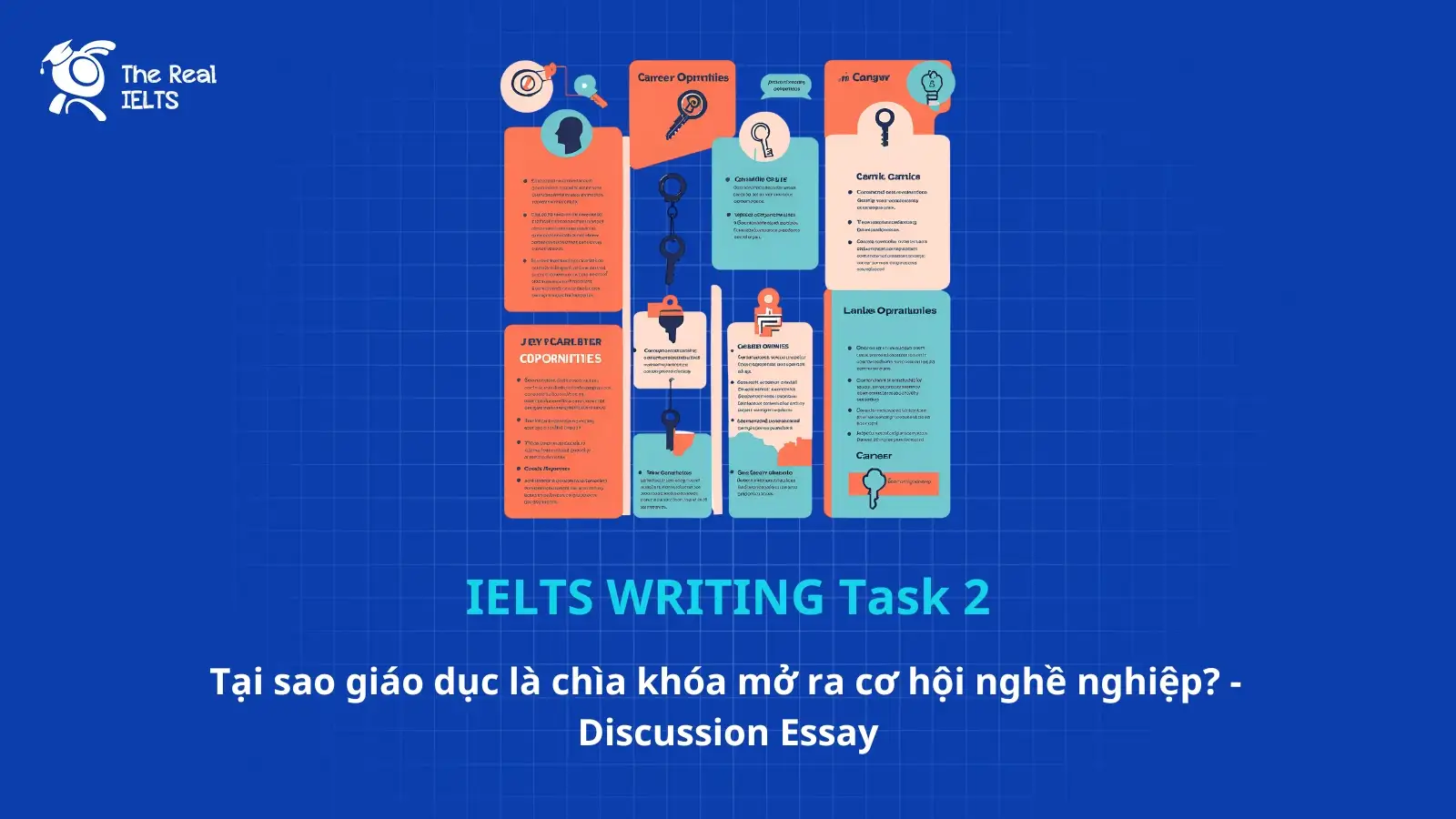Đề thi IELTS Reading có tiêu đề “The Benefits of Urban Green Spaces”
Nhớ đọc thêm các bài luyện thi IELTS nhé.
IELTS Reading:”The Benefits of Urban Green Spaces“
The Benefits of Urban Green Spaces
Urban green spaces, encompassing parks, gardens, and natural reserves within cities, have become increasingly essential in today’s rapidly urbanizing world. As more people move to urban areas, these spaces offer numerous environmental, social, and health benefits. The integration of green spaces into cities not only enhances the aesthetic appeal of urban landscapes but also provides a refuge from the hustle and bustle of city life, playing a critical role in improving the quality of life for urban dwellers.
One of the most notable benefits of urban green spaces is their positive impact on the environment. Green areas within cities act as natural air filters by absorbing pollutants such as carbon dioxide, sulfur dioxide, and nitrogen dioxide, and releasing oxygen back into the atmosphere. Trees and plants in these areas also help to mitigate the urban heat island effect, a phenomenon where urban regions become significantly warmer than their rural surroundings due to human activities and infrastructure. This cooling effect not only improves air quality but also reduces the energy demand for air conditioning in nearby buildings. In cities where pollution levels are high, such as Delhi or Beijing, green spaces provide a natural solution to reducing harmful airborne particles.
Furthermore, urban green spaces play an essential role in promoting biodiversity within cities. Parks and gardens can serve as habitats for a variety of wildlife, including birds, insects, and small mammals, creating urban ecosystems that contribute to the overall ecological health of a region. Biodiversity in urban areas is crucial, not just for the survival of local species, but also for pollination, seed dispersal, and other ecological services that benefit both nature and humans. By preserving green spaces, cities can create environments where humans and wildlife coexist harmoniously, thereby supporting efforts to combat biodiversity loss.
Beyond environmental benefits, urban green spaces have significant social and psychological advantages. In densely populated cities, where people often live in close quarters and have limited access to nature, green spaces offer a much-needed escape. Numerous studies have shown that exposure to nature, even in small doses, can reduce stress, improve mental health, and enhance overall well-being. Parks and gardens serve as spaces where people can unwind, exercise, and engage in recreational activities, contributing to both physical and mental health. For example, in countries like Japan, the practice of “forest bathing,” or spending time in green spaces to improve mental health, has gained widespread recognition for its therapeutic effects.
Urban green spaces also encourage social interaction and foster a sense of community. Public parks and recreational areas act as gathering spots where people from diverse backgrounds can come together, whether for a picnic, a game of soccer, or a leisurely stroll. This shared use of space helps build social cohesion and encourages stronger relationships among urban residents. Particularly in multicultural cities, where individuals from different ethnic and socioeconomic backgrounds live side by side, green spaces provide an opportunity for people to connect with one another, reducing feelings of isolation and promoting inclusivity.
Economically, urban green spaces can also contribute to the financial well-being of a city. Property values in proximity to well-maintained parks and green areas tend to be higher, benefiting homeowners and increasing municipal tax revenues. Additionally, green spaces can attract tourists, boosting the local economy and providing business opportunities. Cities like New York, with its iconic Central Park, or London, with its expansive Hyde Park, draw millions of visitors each year who come to enjoy these urban oases. These green areas not only enhance the city’s reputation but also create jobs in landscaping, maintenance, and tourism-related industries.
Moreover, urban green spaces play a critical role in enhancing public health, particularly in combatting the growing issue of lifestyle-related diseases. With the global rise in sedentary lifestyles and associated health problems such as obesity, diabetes, and heart disease, green spaces offer accessible areas for exercise and outdoor activities. Walking paths, jogging tracks, and fitness zones in parks encourage city dwellers to adopt healthier habits by engaging in regular physical activity. The availability of free, open spaces for exercise is especially important in low-income urban neighborhoods where access to private gyms or fitness centers may be limited.
Lastly, urban green spaces contribute to climate change adaptation and resilience. As the effects of climate change become more pronounced, cities face challenges such as increased flooding, heatwaves, and unpredictable weather patterns. Green spaces, with their natural ability to absorb rainwater and provide shade, can mitigate some of these impacts. Trees and vegetation in parks help to reduce surface runoff, lowering the risk of urban flooding, while shaded areas provide cool refuges during extreme heat events. By incorporating green infrastructure, such as rain gardens or green roofs, cities can enhance their ability to cope with the effects of climate change and create more sustainable urban environments.
In conclusion, the benefits of urban green spaces are vast and multifaceted, spanning environmental, social, economic, and health-related domains. As urbanization continues to accelerate, the importance of preserving and expanding green spaces within cities becomes increasingly apparent. These areas are not just places of beauty and recreation but are essential to the well-being of both city residents and the planet. Investing in urban green spaces is an investment in a healthier, more sustainable future for all.
Đề bài thi IELTS Reading
Multiple Choice (MCQ):
- What is one of the environmental benefits of urban green spaces?
- A. Increased use of energy
- B. Reduced air pollution
- C. Enhanced traffic flow
- D. Increased noise levels
- Which phenomenon do green spaces help to mitigate?
- A. Deforestation
- B. Soil erosion
- C. Urban heat island effect
- D. Light pollution
- How do urban green spaces contribute to biodiversity?
- A. By supporting human development
- B. By creating natural habitats for wildlife
- C. By increasing air conditioning usage
- D. By enhancing noise pollution
- In which country is the practice of “forest bathing” mentioned?
- A. China
- B. United States
- C. Japan
- D. Germany
- What social benefit do urban green spaces offer?
- A. Isolation from communities
- B. Increasing property taxes
- C. Reducing public health risks
- D. Encouraging social interaction
- How do urban green spaces affect property values?
- A. They decrease them.
- B. They have no effect.
- C. They increase them.
- D. They fluctuate unpredictably.
- How can green spaces help cities adapt to climate change?
- A. By reducing surface runoff
- B. By increasing air pollution
- C. By promoting deforestation
- D. By lowering sea levels
- What is an economic benefit of green spaces mentioned in the text?
- A. Reducing urban migration
- B. Increasing real estate value
- C. Decreasing public transportation use
- D. Increasing energy costs
- According to the passage, what is one health benefit of urban green spaces?
- A. Increased sedentary lifestyle
- B. Reduced physical activity
- C. Improved mental health
- D. Higher rates of heart disease
- What type of city infrastructure is mentioned as a green solution?
- A. Skyscrapers
- B. Green roofs
- C. Underground tunnels
- D. Electric vehicles
True/False/Not Given (T/F/NG):
- Urban green spaces can reduce the need for heating in buildings.
- True / False / Not Given
- In the text, New York is mentioned as a city that lacks green spaces.
- True / False / Not Given
- Urban green spaces are responsible for increasing biodiversity in urban areas.
- True / False / Not Given
- Urban green spaces have a direct impact on reducing noise pollution.
- True / False / Not Given
- Studies suggest that access to nature can improve mental well-being.
- True / False / Not Given
- Green spaces help cities reduce the risks associated with flooding.
- True / False / Not Given
- The passage mentions that green spaces reduce traffic congestion.
- True / False / Not Given
- Property values close to green spaces are generally lower than those far away.
- True / False / Not Given
- Japan promotes the practice of forest bathing for its health benefits.
- True / False / Not Given
- Urban green spaces contribute to combating climate change by absorbing CO2.
- True / False / Not Given
Yes/No/Not Given (Y/N/NG):
- Does the author believe that urban green spaces are essential for sustainable cities?
- Yes / No / Not Given
- Does the author think that urban green spaces will completely solve the issue of pollution?
- Yes / No / Not Given
- The author supports the idea of increasing urban green spaces to reduce health issues.
- Yes / No / Not Given
- The author thinks green spaces in cities should be limited to parks only.
- Yes / No / Not Given
- Does the author believe green spaces can improve the mental health of city residents?
- Yes / No / Not Given
Matching Information:
- Match the information to the corresponding sections in the text:
A. Social interaction
B. Economic benefits
C. Climate change resilience
D. Biodiversity
- Section 1: ______
- Section 2: ______
- Section 3: ______
- Section 4: ______
Matching Headings:
- Match the following headings to the appropriate sections of the text:
A. The Role of Green Spaces in Public Health
B. How Green Spaces Help the Economy
C. Environmental and Climate Benefits of Urban Green Spaces
D. Green Spaces as Social Hubs
- Section 1: ______
- Section 2: ______
- Section 3: ______
- Section 4: ______
Matching Features:
- Match the following benefits with the correct feature of urban green spaces:
- Mental health improvement: ______
- Flood risk reduction: ______
- Increased property values: ______
- Improved air quality: ______
A. Biodiversity
B. Economic benefits
C. Social cohesion
D. Environmental benefits
Matching Sentence Endings:
- Green spaces in urban areas help to…
- A. reduce the need for air conditioning.
- B. increase traffic congestion.
- C. promote isolation in cities.
- D. make cities less livable.
- Urban parks can serve as…
- A. habitats for small wildlife.
- B. centers for manufacturing.
- C. sources of pollution.
- D. expensive investments.
- Urban green spaces are essential because…
- A. they drive urbanization.
- B. they help cities become more sustainable.
- C. they limit social interaction.
- D. they prevent all climate change impacts.
Sentence Completion:
- Urban green spaces are important because they help to mitigate the ______ effect.
- The practice of forest bathing is popular in ______.
- Trees and vegetation in green spaces help to absorb ______.
- One of the key economic benefits of green spaces is their impact on ______.
Summary Completion:
Complete the summary with words from the passage:
Urban green spaces are critical for improving both the ______ and the ______ of city residents. They also play a key role in mitigating the ______ effect and promoting biodiversity by creating habitats for ______.
Short Answer Questions:
- What is the primary health benefit mentioned in the text related to urban green spaces?
Đáp án bài thi IELTS Reading
Multiple Choice (MCQ):
- B
- C
- B
- C
- D
- C
- A
- B
- C
- B
True/False/Not Given (T/F/NG):
- False
- False
- True
- Not Given
- True
- True
- Not Given
- False
- True
- True
Yes/No/Not Given (Y/N/NG):
- Yes
- No
- Yes
- No
- Yes
Matching Information:
- A: Social interaction
- B: Economic benefits
- C: Climate change resilience
- D: Biodiversity
Matching Headings:
- C. Environmental and Climate Benefits of Urban Green Spaces
- D. Green Spaces as Social Hubs
- A. The Role of Green Spaces in Public Health
- B. How Green Spaces Help the Economy
Matching Features:
- Mental health improvement: C. Social cohesion
- Flood risk reduction: D. Environmental benefits
- Increased property values: B. Economic benefits
- Improved air quality: D. Environmental benefits
Matching Sentence Endings:
- A
- A
- B
Sentence Completion:
- urban heat island
- Japan
- pollutants
- property values
Summary Completion:
- mental health
- physical health
- urban heat island
- wildlife
Short Answer Questions:
- Improved mental health
Luyện tập bài khác ở bài viết:”100 bài luyện IELTS Reading 2024 – 2025“















